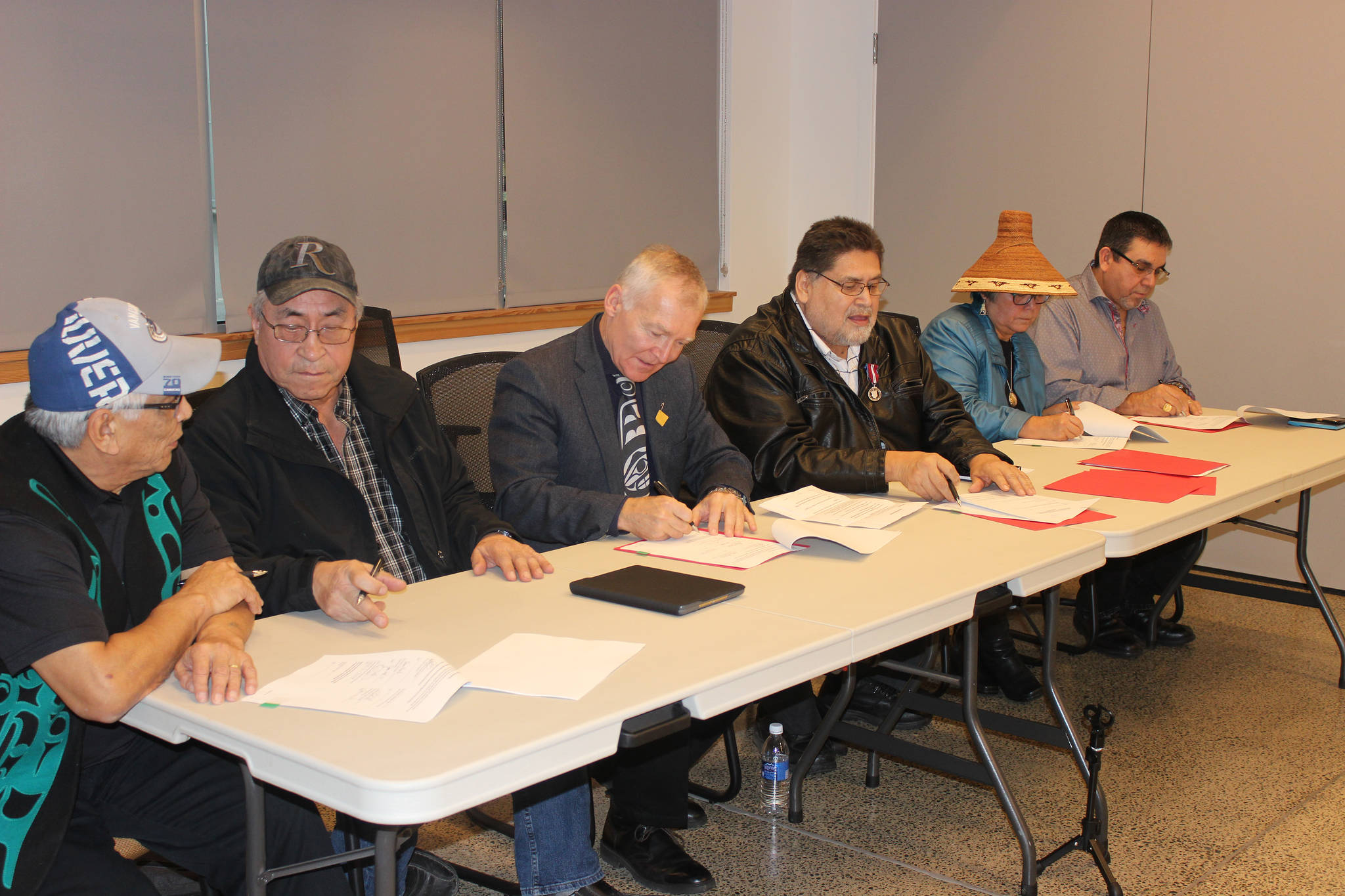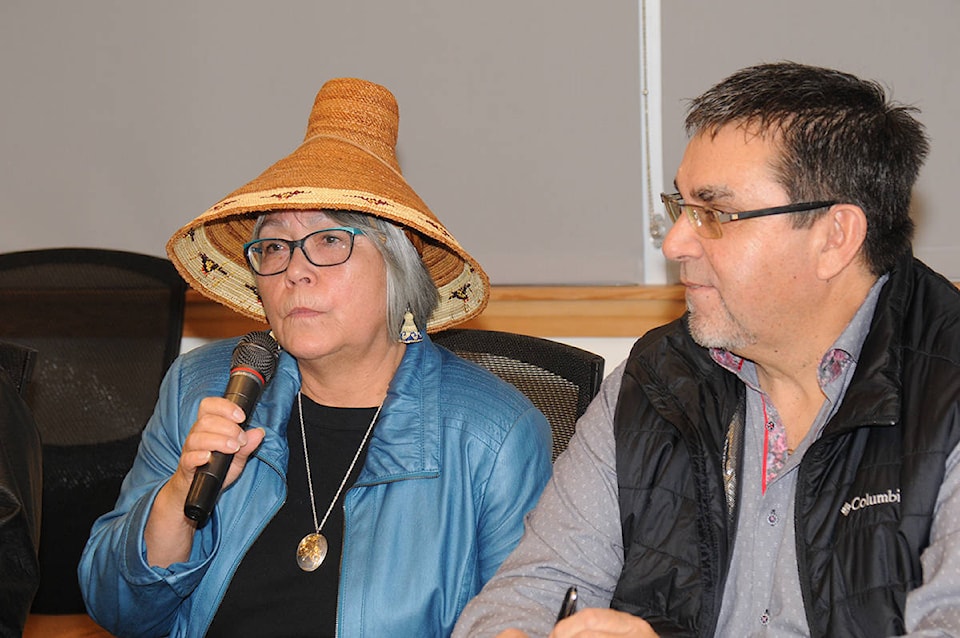The Province of British Columbia and the five Maa-nulth First Nations signed a government-to-government agreement on Friday (Jan. 12) that is the first of its kind in B.C. The agreement sets up a framework for both sides to work together that was absent in post-treaty language.
“It’s a new type of relationship,” said Scott Fraser, Minister of Indigenous Relations and Reconciliation. “It’s a commitment by government and the Maa-nulth nations to work together on a government-to-government basis now that the Maa-nulth nations have achieved treaty.”
Fraser said this agreement “is another mechanism, another way for us to work together” on issues such as land, natural resources and treaty issues that did not exist when the language of the historic Maa-nulth Treaty was created. “There was no anticipation of that when the treaty process was being developed,” he explained.
Fraser said until Friday’s signing, there was no requirement post-treaty for governments to work together, whether at the local level, provincially or federally.
“I think the Maa-nulth nations have shown leadership and become active members of the Alberni-Clayoquot Regional District and the Strathcona Regional District. So we’re seeing it from both sides.”
At the time the Maa-nulth Treaty was signed in 2011, Fraser was aboriginal relations critic for the opposition NDP, and said he pushed for a framework for the nations to work with regional districts.
“These nations are their own nations now, their own governments now and we need to work in partnership with them.”
Robert Dennis Sr., Chief Councillor for the Huu-ay-aht First Nation, said this agreement formalizes relations with the provincial government.
“It will enable us to have more meaningful discussion with government, on a government-to-government basis,” he said following the signing. “Instead of meeting with a junior bureaucrat, I’m now meeting with a minister.”
“Government to government is critical; at the Nuu-chah-nulth table we’ve always said we want discussions at a government-to-government basis, and now this will enable us to have that.”
Dennis attributed the deal to a new government willing to move forward on post-treaty issues. “At this stage I’m much happier with the NDP government; they’re willing to make that happen, as opposed to the past government would talk about it.”
Signing the Maa-nulth Treaty was an important step for the five nations, Dennis said, adding that it’s essential that the nations continue to work hard to make the most of opportunities the treaty offers. “By continuing to build on our relationship with the province, we show what can be accomplished with true reconciliation,” he said.
Dennis is hoping the new agreement will help with negotiations over paving the road to Bamfield—something the Huu-ay-aht have requested repeatedly. The Huu-ay-aht wants to turn its focus to economic development from forestry, and a better road to Bamfield is critical in developing its properties in Bamfield. “We can diversify our economy and start focusing on tourism development among other things.”
Anne Mack, tyee ha’wilth for Toquaht Nation, said building relationships with the B.C. government was part of the treaty process. “It’s very important to move things forward,” she said of the agreement.
“Modern treaties themselves are new to both governments. Once the treaty was concluded, they were thinking there’s your treaty, now go move forward with it. You really need to build that relationship to move things forward,” she said.
Les Doiron, president of the Yuulu?il?ath (Ucluelet) First Nation, agreed. “Being a treaty nation and being a modern-day, self-governing nation is monstrous for us. But we have the municipal, provincial and federal governments that we work with on a day-to-day basis. Moving forward, we need to have that (government-to-government relations).”
Peter Hanson, Legislative Chief for the Ka:’yu:’k’t’h’/ Che:k’tles7et’h’ (Kyuquot/ Checklesaht) First Nations, said the new agreement will smooth relations with the province. “It completes the suite of venues to achieve orderly, collaborative and respectful implementation of the Maa-nulth Treaty in partnership with British Columbia,” he said.
Charlie Cootes, chief councillor for the Uchucklesaht First Nation, said the deal solidifies the Maa-nulth nations’ relationship with regard to doing business with higher levels of government.
“It’s the first step in building a relationship that will steer us away from dispute resolution and implementation issues,” he said.

